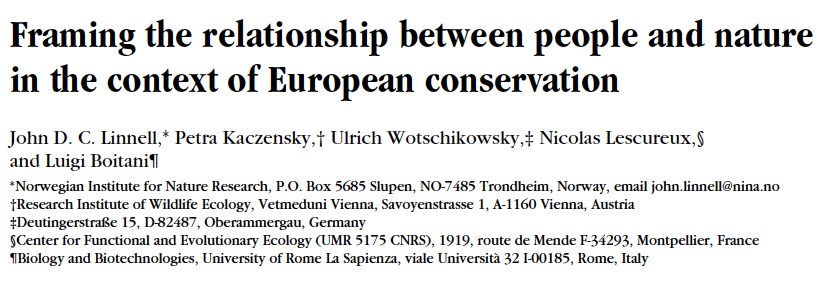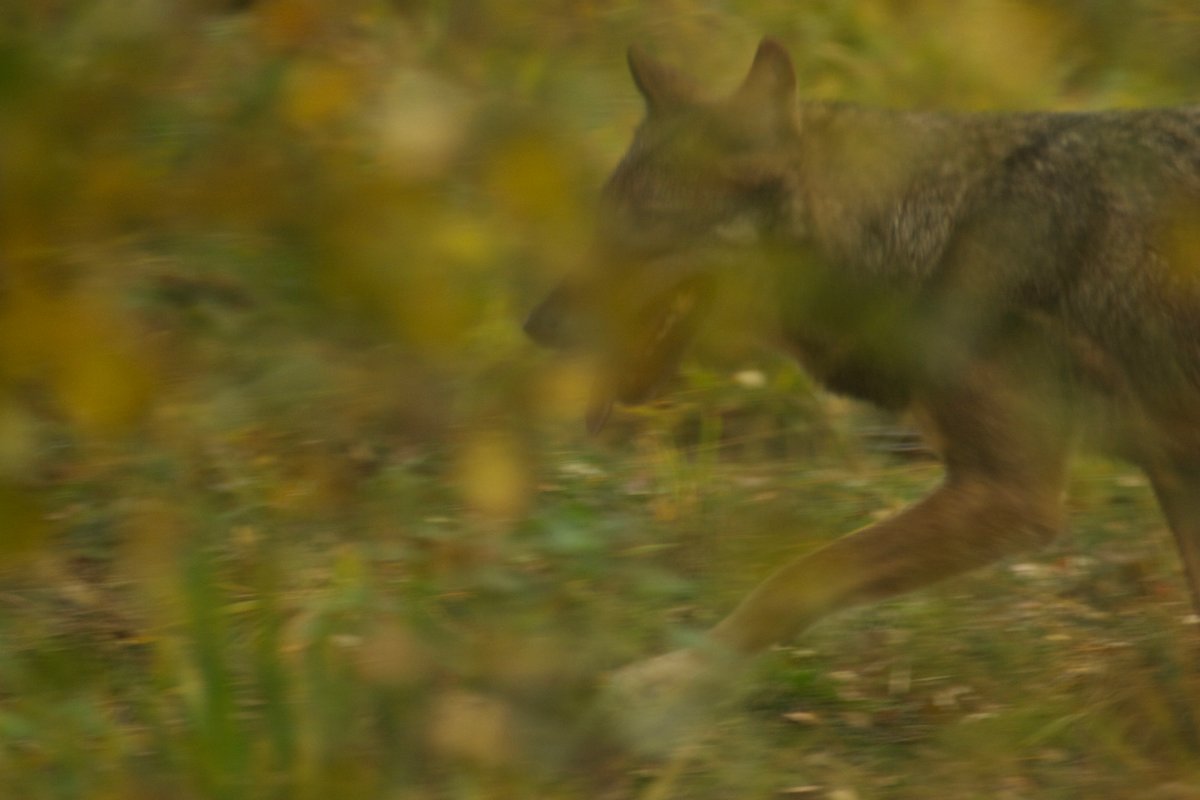1/ Are nature and human culture separate or integrated? Today’s #rewildginscience paper discusses this in European context. It makes the case that nature and culture are integrated, but that ideals of #wilderness and #rewilding are now challenging established practices. 

2/ “Although there is widespread political and societal support for biodiversity conservation in general, there are considerable disagreements about how to implement it.” E.g. Land Sparing or Sharing? Fence protected areas or Connect them?
3/ How should humans interact with nature? Conserve wilderness or manage landscapes? Is hunting appropriate? How do we tackle human-wildlife conflict?
4/ Traditional ideas are being challenged by new ones like new conservation conbio.onlinelibrary.wiley.com/doi/full/10.11…, Pleistocene rewilding jstor.org/stable/10.1086…, and novel ecosystems sciencedirect.com/science/articl…
5/ The way the human–nature relationship has been framed in conservation biology falls into 4 phases: nature for itself, nature despite people, nature for people, and people and nature, all of which are currently competing. science.sciencemag.org/content/345/62…
6/ “There has been an explosion in literature on ecological and environmental ethics in recent years, but little has trickled down into conservation practice, and these disciplines remain distant from the reality of the people sharing their landscapes with biodiversity.”
7/ The authors highlight that traditional disciplinary borders in science inherently assume a separation between natural processes and human processes, and between the wild and the domestic. This inherent dichotomy has been widely criticised.
8/ The idea that humans can be considered dual beings, with their biological parts studied by natural scientists and their social and cultural parts by social scientists and the humanities, is also challenged by research in ethology, cognitive science, and ecological psychology.
9/ In short, the boundaries between nature and culture are blurry in Europe! E.g. many habitats (e.g. grasslands & moorlands) have been created and maintained by centuries of human activity. And they are protected by the Bern Convention & Habitats Directive.
10/ “This legislation often prohibits natural succession following land-use abandonment.
Of the habitat listed in the Habitats Directive, an estimated 63 of 231 depend on some form of low intensity agricultural intervention.”
Of the habitat listed in the Habitats Directive, an estimated 63 of 231 depend on some form of low intensity agricultural intervention.”
11/ Why are these habitats protected? Because 1) they are associated with high species diversity of charismatic species like flowers and butterflies & 2) they are associated with high aesthetic and cultural heritage.
12/ Research indicates people prefer open and diverse landscapes. Protections are essentially protecting the work of previous generations, which are important to rural people’s identity.
13/ “The desire to use constant intervention to maintain a specific desired form of nature was uncontroversial in Europe for many decades. However, the recent emergence of a European version of wilderness conservation & #rewilding is challenging this view.”
14/ The authors highlight that advocates of #rewilding can fall into two camps, those that are happy to embrace the loss of early successional habitats and those that seek to restore wild-living large herbivores that can help create and maintain these habitats.
15/ Both ideas can be controversial from ecological & cultural perspectives. The latter as many rural people disapprove of the removal of human agency from the landscape. There are also concerns about legal & animal welfare issues, particularly when using domestics as proxies.
16/ The authors go on to discuss cases of the wild horse, red deer, protected areas, Inside v outside protected areas, and large carnivores.
17/ Wild horse are extinct and only various breeds of domestics remain. Various locations have long histories of their presence, e.g. the New Forest. Increasingly their role is being referred to as providing ‘natural grazing’ and populations being referred to as ‘wild’. 

18/ Red deer are amongst the most wide spread wild herbivore in Europe, they are valued game species and subject to intensive management. In some countries e.g. Norway they experience a fairly wild existence, but generally they are heavily managed.
19/ Supplementary feeding is a common practice to keep densities high and for trying to avoid human-wildlife conflict associated with migration to find food in winter. Fencing is often a common practice to keep them where they are wanted. Are they wild? 

20/ European Protected Areas: “Of the 14,727 protected areas in the Natura 2000 network most permit agriculture (69%), forestry (59%), livestock grazing (46%); and hunting, fishing, and gathering activities (53%).”
21/ For 74 surveyed EUROPARC associated Protected Areas, 40% allowed livestock grazing, 26% hunting, and 49% conducted mowing. Despite this, the PAs “ranked preserving wilderness values and #rewilding as key objectives….”
22/ This asks the question, does ‘wilderness’ actually mean the current landscape that is a mix of people and nature in our working language in Europe? (I believe this type of debate is often discussed in terms of wilderness v wildness.)
23/ European conservation legislation does not often differentiate between inside and outside protected areas. E.g. species protection is equal everywhere.
24/ In Europe, large carnivore populations have increased and they are often associated with wilderness. But the bulk of their distribution is in multi-use landscapes. Carnivores in Europe are fed, livestock can be an important part of their diets, & they are hunted.
25/ While large carnivores are recovering in Europe their full set of ecological functions haven’t been restored yet. And the integration of large carnivores in cultural landscapes is a stark example of integrating wildness into culture. 

26/ The authors highlight that they have made the case that Europe is a Biocultural System and has been for a long time. The authors argue that #rewilding and wilderness narratives are now driving a more dualistic ideal that separates people from nature.
27/ While the authors have taken quite a dualistic approach themselves in describing different approaches to conservation/restoration they do go on to highlight that there is space to accommodate multiple approaches, including low intervention.
28/ In Europe, the Wild and the Domestic are not distinct and there are plenty of blurry edges and together perhaps capture the Biocultural system. The future will be equally blurry because of the diversity of desires for the collective landscape.
29/ I really enjoyed reading this paper. The writing is to the point and packed full of important points and food for thought. Well worth a read: conbio.onlinelibrary.wiley.com/doi/abs/10.111…
30/ Thanks to @johndclinnell and co-authors for a great read and important thoughts. Published in @ConBiology
• • •
Missing some Tweet in this thread? You can try to
force a refresh









